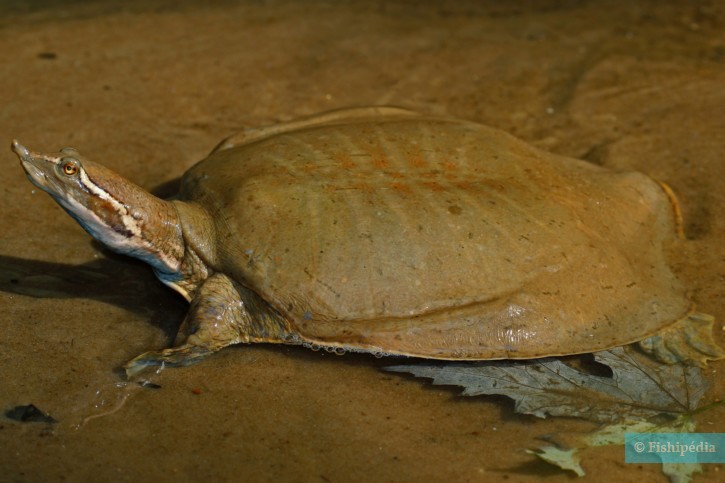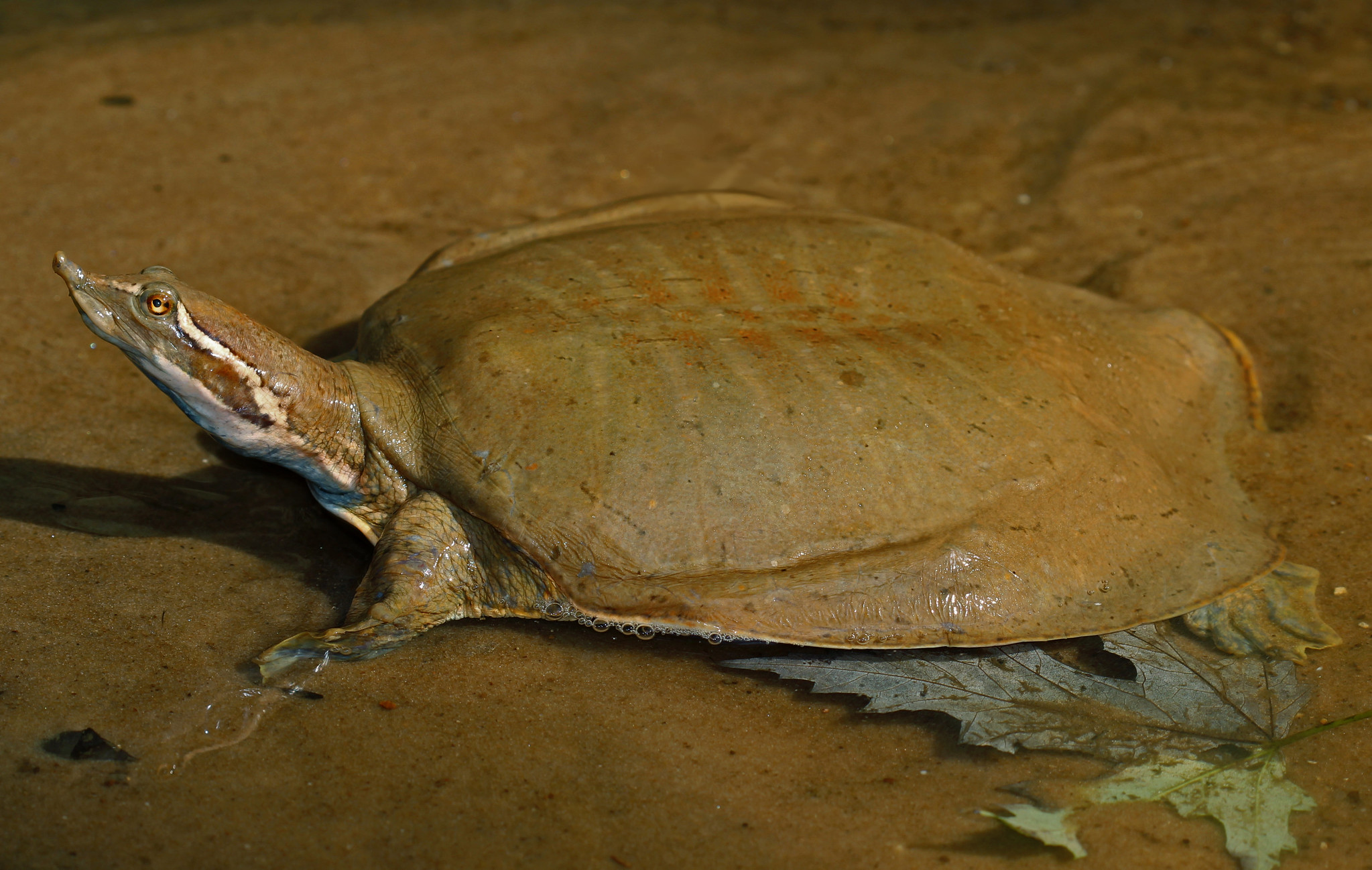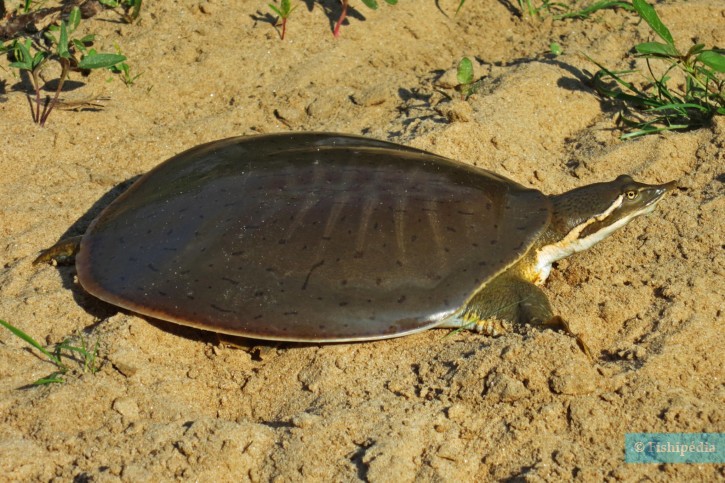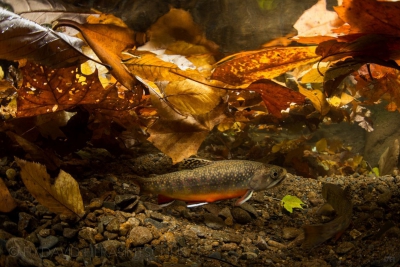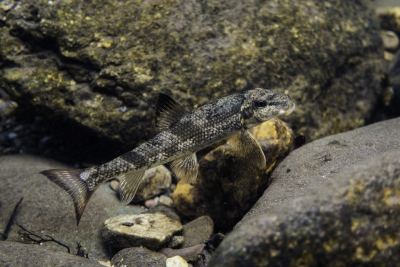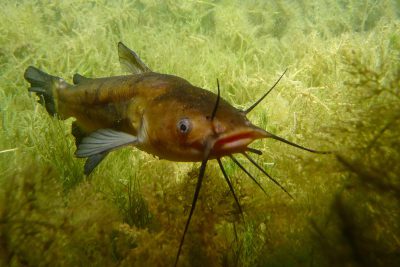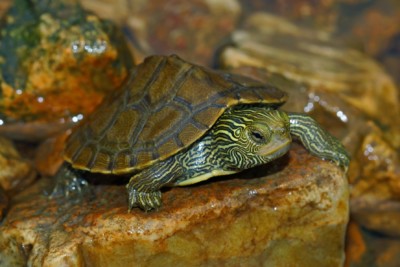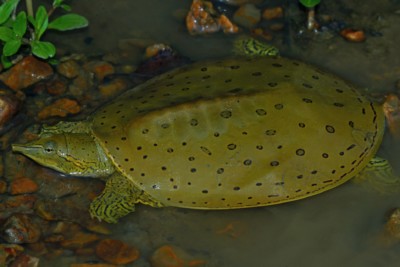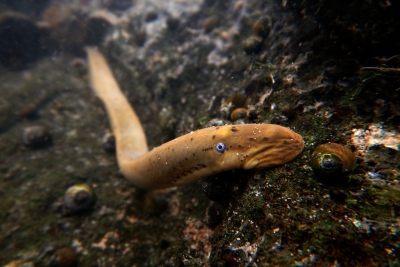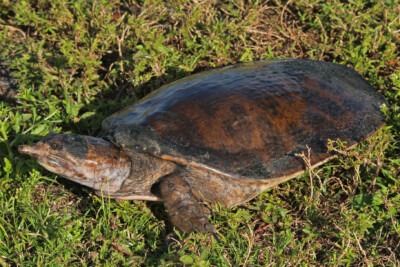Introduction
Apalone mutica, commonly known as smooth softshell turtle, is a fresh water reptile from the North America.
This sheet is currently being prepared. The texts currently proposed come from our data model or are being drafted. To request priority for this content, you can write to us HERE.
Who is it?
Morphology
-
Type
-
Female size30 - 50 cm
-
Male size20 - 25 cm
-
Weight10 - 15 kg
-
Motifponctuations
-
Mimicrysand
-
Longevity25 year
-
Type
-
Female size30 - 50 cm
-
Male size20 - 25 cm
-
Weight10 - 15 kg
-
Motifponctuations
-
Mimicrysand
-
Longevity25 year
How to recognize This reptile ?
The smooth softshell turtle measures around 20 cm. The females are more imposing and some specimens can reach 25 cm. This reptile is bicolore with a predominantly marron and beige body. The also has marron ponctuations.
Sexual dimorphism
The female is bigger than the male.
Behaviour & Life cycle
-
Sociabilitysolitary
-
Way of livingdiurnal
-
VenomousNo
-
Dietpredator
The smooth softshell turtle is a reptile solitary naturally found on the bottom. This species is carnivorous .
The smooth softshell turtle is a territorial animal that does not tolerate any incursions into its living area. It is particularly virulent against other territorial species and it can provoke heated fights. Relationships between conspecifics are also hectic, with each seeking to secure its place. In a constant quest for dominance, the dominant males of this species cannot stand each other. The battle between two individuals can be intense and violent. It will result in the submission and sometimes even death of one of the protagonists.
Reproduction
-
Reproductionovipare qui enfouit ses œufs
-
PolygamyYes
-
Clutch size15 - 25 eggs
The smooth softshell turtle is a reptile ovipare qui enfouit ses œufs. In this species, the dominant males are polygamous and reproduce each season with several females. This reptile protects its eggs from nearby predators.
Harmless species
This species does not represent any particular threats to humans when encountered in its natural environment.
Origin and distribution
Conservation status of populations (IUCN)
What is its habitat?
Natural environment characteristics
-
Temperature5 - 30 °C
-
FlowStrong and Medium
Biotope presentation
The acidification of water comes from the decomposition of plants. This phenomenon changes the color of the water, which tends to turn brown. In some areas particularly rich in organic matter, the water is so dark that it is called "black water".
The smooth softshell turtle is most often found at a depth between 0m and 2m. However, it is not impossible to find this species at other depths.
The smooth softshell turtle prefers well oxygenated waters in current areas and rapids. It frequents fast flowing waters where the bottom is strewn with pebbles, wood or leaves carried by the current. It can be found not far from waterfalls .
Species of the same biotope
To go further
Sources & Contributions
Participation & Validation
The Fishipedia team and specialist contributors are committed to providing high-quality content. However, although the information comes from scientific sources or testimonials from specialists, the cards may contain inaccuracies.
Translation
Translation done with the valuable contribution of our translators, who make this information available to a wider audience. We sincerely thank them for their commitment.
Scientific partners
Same genus
Species of the same biotope
